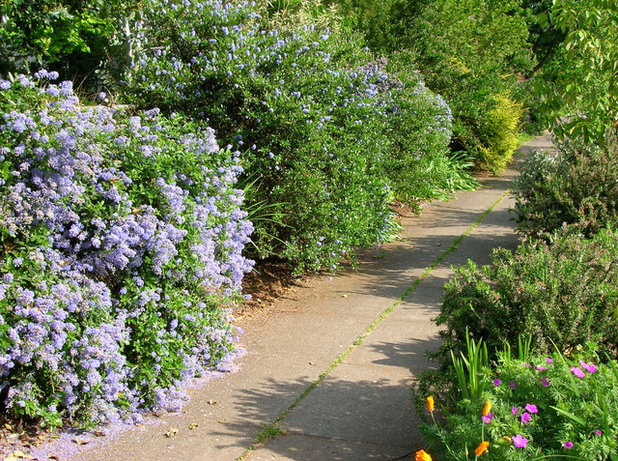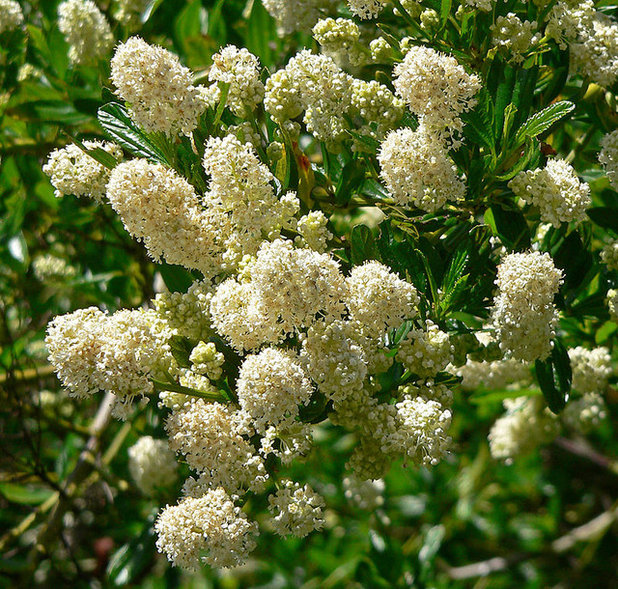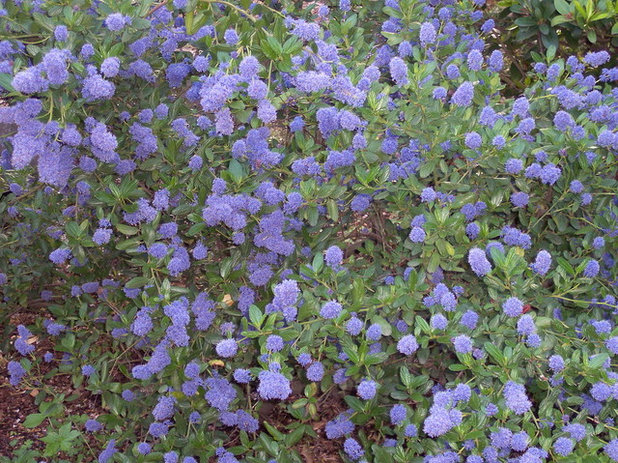The evergreen wild lilac (
Ceanothus sp) is one of a handful of distinctive and iconic plants native to the U.S. West Coast. Nearly impossible to grow outside of California, Oregon and Washington, it thrives where summers are hot and dry and winters are cool and wet.
Ceanothus thyrsiflorus, native to southern Oregon and Northern California, is perhaps the cold hardiest and most adaptable of the evergreen wild lilac species, and there are many named varieties growing up and down the West Coast and in southwest Canada to prove it.
Why is native
Ceanothus thyrsiflorus so beloved to West Coast gardeners? Its clouds of vibrant, saturated blue flowers are honey scented and draw pollinating insects and hummingbirds in droves during its bloom period in April and May. The foliage has a faintly resinous scent that perfumes the air, particularly on a warm day. And it’s a fast-growing shrub once it settles in.

Kate Bryant
Botanical name: Ceanothus thyrsiflorus Common names: Blueblossom, wild lilac
Origin: Coastal and intermountain North America, from Oregon to California
Where it will grow: Hardy to 0 degrees Fahrenheit (USDA zones 7 to 9; find your zone)
Water requirement: Ceanothus thyrsiflorus thrives in a dry-summer and wet-winter climate. Once it’s established, no supplemental summer water is required.
Light requirement: Partial to full sun
Mature size: 3 to 20 feet tall, depending on cultivar
Benefits and tolerances: Blossoms provide insect nectar and pollen; it produces seeds in fall.
Seasonal interest: Fluffy blue to white honey-scented flowers in May
W
hen to plant: Fall to spring is ideal
 Distinguishing traits.
Distinguishing traits. Showy white or blue flowers, appearing from late April to early June, depending on region, are honey scented and provide pollen and nectar for visiting birds, butterflies and pollinating insects. Blueblossom also fixes nitrogen in the soil.
How to use it. There are many named cultivars, with forms ranging from 3 feet tall and 6 feet wide (ground covers) to 20 feet tall and 12 feet wide (small trees).
C. thyrsiflorus is evergreen and among the cold hardiest of the Ceanothus species, so it makes a fine informal evergreen hedge that also provides wildlife with shelter, nectar and pollen. Drought-tolerant Ceanothus is perfect for an out-of-the-way area of the garden, beyond the reach of the hose or watering system.
Photo by Stan Shebs
 Planting notes.
Planting notes. Evergreen Ceanothus is generally a fast-growing shrub that can be short lived, sometimes maxing out at 10 to 15 years in the garden (although it can last twice that long in good conditions). Give it well-drained soil, avoid fertilizer and provide minimal or no summer water, and it will reward you richly with glorious scented flowers and a beautiful habitat for an array of native creatures.
Selections include
C. thyrsiflorus ‘Repens’, reaching about 3 feet tall and 9 feet wide; ‘Victoria’, about 8 to 10 feet tall and wide; ‘Skylark’ (recipient of the Royal Horticultural Society’s Award of Garden Merit), about 10 to 15 feet tall and wide; ‘Snow Flurry’, about 10 to 15 feet tall and wide, with white flowers; ‘Victoria’, a standard 8- to 12-foot tall selection with medium blue flowers; and ‘Oregon Mist’, a cultivar with slightly deeper blue flowers that reaches about 15 feet.
Photo by A. Barra





